
Battery reviews seldom allow a long-term look at a manufacturer’s product. The lifespan of batteries, which are measured in dozens of months, far exceed the period of time available before a reviewer’s conclusions are due in print or online. In 1999, when I wrote a product review of the Hawker Energy Products Odyssey battery PC1700-MJ battery I had used the battery for less than a year. The results were predominantly a reflection of the PC1700’s specifications, the technology behind it, and why it was at that time representative of the most advanced battery line available in North America. Nonetheless, it was still a review that could only make projections, based upon manufacturer data and anecdotal experiences from 4x4 enthusiasts, how the unit would hold up over time.
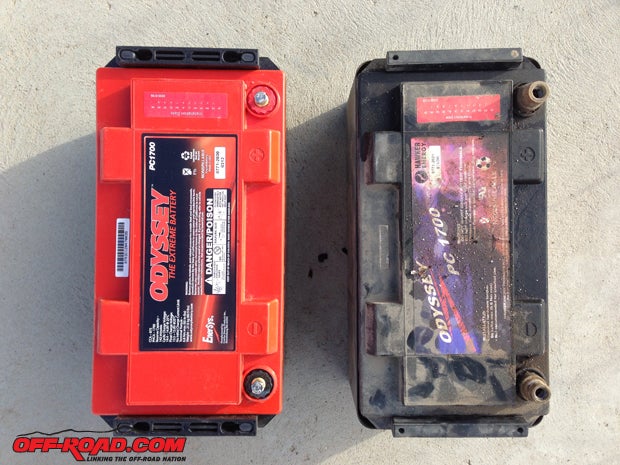
Fast forward to winter of 2012. The PC1700 had been rotated from my original truck, Project WomBAT, to the latest project, a Collector’s Edition 1997 FZJ80 Landcruiser. The WomBAT has at that point been parked for three years, with the Odyssey battery still wired up, but with no trickle charger to maintain it. Prior to that the truck had seen only limited driving from 2006 until 2008. In essence, the battery was under occasional use in northern Idaho from 1999 to 2006, then saw almost no use for 24 months more, followed by zero use for the final two years in the heat and cold of the high Wasatch Mountains of Utah. At that point, when I pulled it from the Isuzu, it lacked enough charge to make the ignition beeper come on. So on went a Schumacher SC600A charger.
I have to say I was not expecting much, but with a dead battery in the Toyota I was hoping to avoid the pain of purchasing a new battery. So in went the Odyssey battery, the tray’s hold downs needing some modifications to fit the larger-than-stock Group 27 battery. Cables in, I was once again made a believer by the performance of the product as the Landcruiser immediately fired up. I would subsequently get another nine months of weekly use out of the battery until I began to notice a telltale decline in the cold cranking amps. When I left the truck unused for more than two or three days in midwinter of 2012 I was met with the sound of battery on its last legs. The old gal had finally given up the ghost, almost 13 years after I originally posted my review.
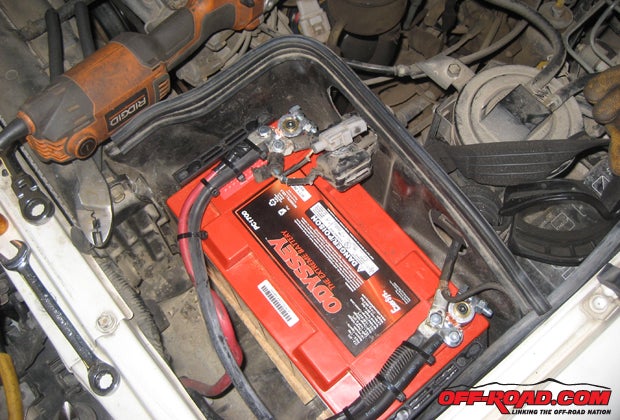
The PC1700 had so impressed me that I wrote to EnerSys (http://www.odysseybattery.com/; formerly Hawker Energy) and I contacted them to share about my experience. The subsequent conversations led to a discussion of doing a follow-up review to the original. While the Odyssey battery has a manufacturer projected 3- to 10-year service life, mine had far exceeded that duration, actually exceeding the 8- to 12-year design for which they are renowned. Why is their battery so durable and with such longevity? It clearly comes back to the construction and materials.
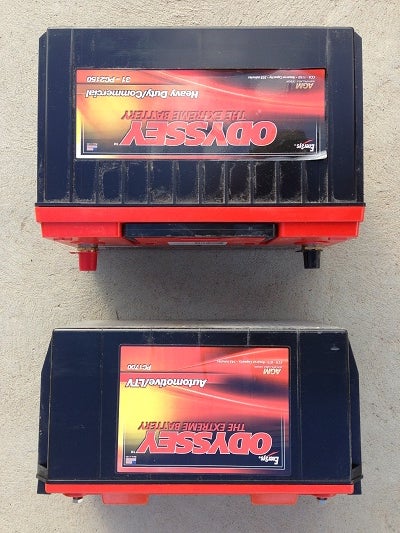
Odyssey batteries are built around costly and complex AGM (absorbed glass mat) VRLA (valve-regulated lead-acid) cores. Their sealed drycell design offers several well-publicized advantages, including the capacity to act as both starting and deep-cycle units. They can be shipped (certified by USDOT and IATA), arrived fully charged, and may be mounted in all positions except inverted. Though a subtle feature, their symmetrical housing allows a stable form for mounting them on their sides, a benefit that competitors with more unique shapes don’t offer (though they may have a greater cool factor). Featuring TPPL (thin-plate, pure-lead) welded internal cells and the highest level of purity in lead, Odyssey batteries feature extreme vibration resistance. From the cycling perspective, the AGM design permits 80% discharges (think winch fest) to occur up to 400 times. Conversely, these batteries can gather dust on the shelf for two years and still be operable, a claim that my own patterns of use bore out.
The PC1700 has remained largely unchanged from the PC1700MJ I installed in the last millennium. Although the company still offers the MJ, or metal jacketed, version of this model, I elected to review the standard model. Along with it I asked to review a second model that would provide an ideal pairing for a dual-battery configuration. After working with EnerSys’s technical advisors we settled on the SAE group 31 model 31-PC2150S. Combined with the PC1700, the batteries provide a massive 168 amp hours.
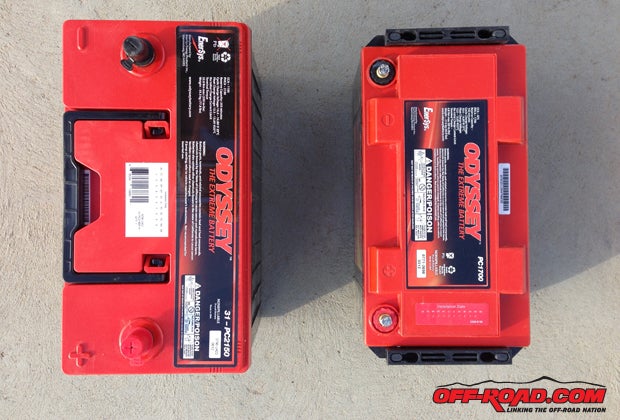
While many off-road enthusiasts who install dual-battery setups will elect to isolate the cells from one another, many of the advantages of such configurations are based upon the need to protect the starting battery. In most instances, a starting battery cannot function as a deep-cycle cell, and thus has greater restrictions for winching or other uses. For instance, an Optima Red Top is well known to be adequate for moderate winching wherein the depth of discharge doesn’t harm the battery. Unfortunately, that level of discharge is not in the range of a deep cycle. Hence an Optima enthusiast is apt to need two of their products: a starting and a deep cycle battery. Conversely, the Odyssey battery’s design allows it to undergo heavy usage in both draining winch duty, and yet still reviving to serve as starting battery.
The second advantage—capacity—of a dual-battery system enables times of heavy electrical loads. For instance, in 2009 Overland Journal published an extremely thorough winch ‘shootout.’ In the course of repeated 80 pulls on the various winches their meters registered average amperage draws of 139A for just over 5 minutes, with peak draws for the five models averaging 603A. Such demands tax a battery’s capabilities. To get a sense of what those numbers mean, consider the duration of most winch pulls. Leading winches average ~20fpm when under significant load. Thus a common full line winching distance of 120’ will draw upon the battery and, to a lesser extent, the alternator for ~6 minutes. What does that mean in terms of battery size?
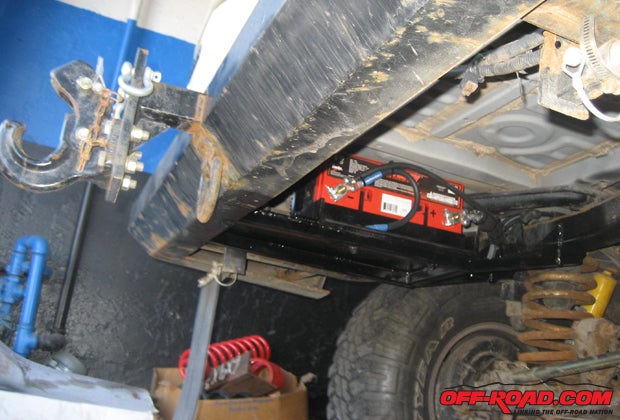
For simple calculations, 1Ah (amp hour) is equivalent to producing 1A for 10 hours. Alternately, it equates to 10A produced for only 1/10th of an hour (i.e., 6 min.). To translate this to an off-road demand, a typical winch during such a full line pull averages a 140A draw. The PC1700 has a 68Ah rating, and the 31-PC2150 a hefty 100Ah. Combined in a system such as we created their joint capacity equates, in optimal conditions, to at 51 minutes of winching. For high demand pulls, 400A is a much more realistic figure to use. At that rate, our dual batteries would yield 13 minutes of high demand line pulling. That’s a very comfortable capacity, and it illustrates the benefits of such a dual system. It also underscores how the right dual-battery configuration can alleviate one reason to purchase an expensive high output alternator. In effect, the alternator is less critical in the electrical system to help keep pace with a winch’s draw.
For everyday use, the PC1700 is rated at 810cca and 142 reserve capacity minutes, and the series 31-PC2150 measures a whopping 1150cca and 205 reserve capacity minutes. For comparison, an Optima Yellow Top series 31 has 900cca and 155 reserve capacity minutes. These figures reflect a modest reduction in the capacities of the original PC1700 I reviewed, whose specifications were 156 reserve minutes and 930cca. However, still present is the less evident but extremely high rate of charge for the Odyssey batteries. Claims EnerSys makes for Odyssey batteries underscore the benefits of rapid recharge following depletion from winching, lighting, or other means for draining the battery. However, with a 10-hour combined capacity of 157Ah the concern of depleting this pairing of batteries is significantly reduced over the single system I have historically relied upon.
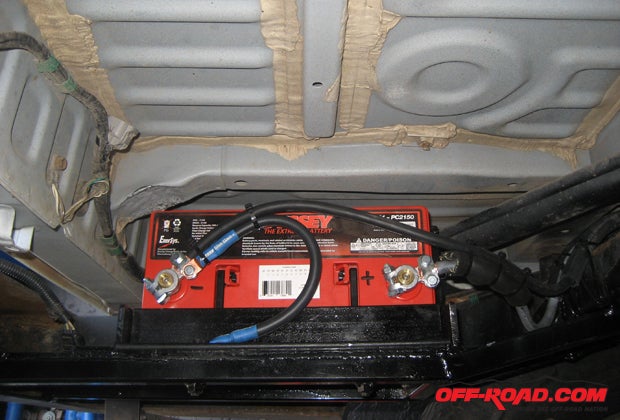
All of that capability doesn’t come in a dainty package, though. Although efficient in their use of space (no large voids as with orbitals), both batteries pack some heft. The PC1700 weighs in at just over 60 lbs., and its big brother almost 78 lbs. The 31-PC2150 does not tuck into engine bays easily. Between its mass and girth it needs a large, stable location to house it. Though an atypical approach, I called upon the hardcore wheeling talent and metal artists at Custom Muffler and Auto Fabrication in Logan, UT. To assure a solid mount for the 31-PC2150 they welded a cradle to suspend the battery under the large underbody cavity originally used by Toyota for housing the spare tire. The heavily skid plated mount allows ready access to the tin-coated brass terminals (e.g., for jumper cables or a fridge in the cargo area).
Situated in the underbody toward the driver’s side, the mount location avoids heat from the exhaust and is protected from flying debris thanks to a plate steel box. The Odyssey battery’s construction allows mounting on its side for easy access, while eliminating problems associated with acid spilling and gas venting. Though protected with heavy rubber padding in the mount’s cradle, the Odyssey battery’s own design is already highly resistant to vibration. Given the length of run to the engine bay we utilized 0 gauge wire sheathed within fuel line. The connectors used feature dual attachment points. The other advantage of this location is adjacency for an upcoming rear winch mount that will occupy the remainder of the spare tire cavity. In this manner the winch and the second battery are a mere foot apart.
Warranties are also a strong suit of EnerSys products. Odyssey batteries in a BCI (Battery Council International) size carry a four-year warranty period against materials and workmanship. Even then, the performance behavior of these and other AGM batteries is such that power is lost slowly at the end of their life (as I experienced), rather than rapid or sudden failure. With 1,028 dealer locations in the United States and Canada, purchasing and finding support for an Odyssey battery is straightforward.

The Odyssey line of batteries has continued to impress me. Their build quality, longevity and versatile capabilities make them a perfect all-in-one electrical reservoir. With my originally tested PC1700 lasting well over a decade I expect this dual system, which will experience significantly lower demands on each individual battery, to last an equally long time.
CONTACT
Odyssey Battery
http://www.odysseybattery.com/
800.538.3627


 Your Privacy Choices
Your Privacy Choices